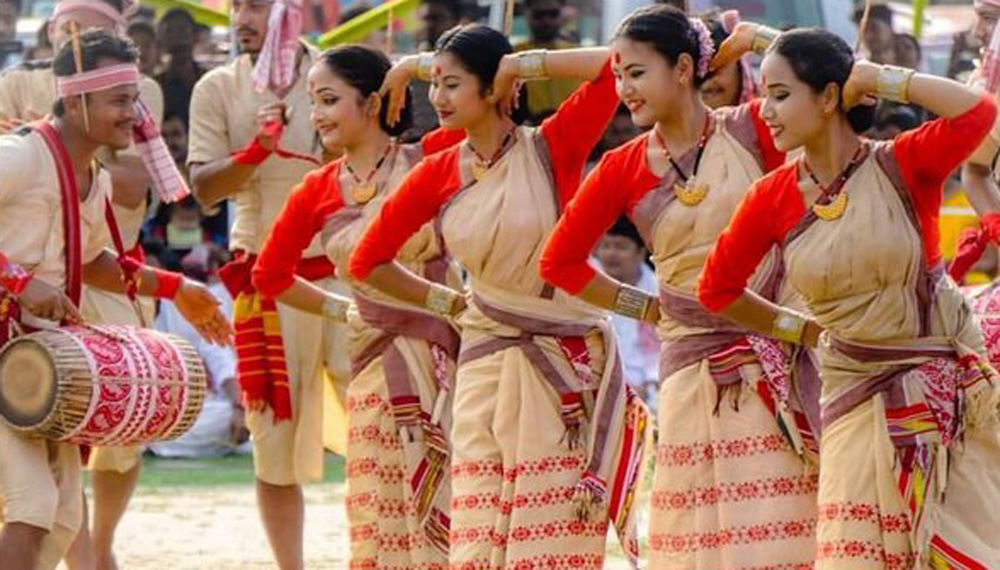
The Bihu dance is quite an energetic form of dance that involves rapid hand and feet movement. The dance emphasises more of the role of the women and the female members maintain a tighter line of movement in comparison to the men folks. Typically in a Bihu dance the men folk enter the stage followed by the female performers. The dance moves are choreographed keeping in mind the roles of both of both the genders.
Bihu is the indigenous folk dance part of the Assamese culture mainly performed in Assam, India. It is a traditional dance centered around the red colour theme, signifying joy, vigour and celebration. Celebrated by both men and women, this merry dance emphasizes the Assamese tradition’s cultural roots when the Ahom king Rudra Singha (1696-1714) invited Bihu dancers on the special occasion Rongali Bihu in 1694. This inherited tradition started generations ago when the local farmers celebrated the harvest and enjoyed this ceremonial dance. It symbolizes the beginning of the agricultural season in the Northern parts of India.
The word ‘Bihu’ is derived from the Sanskrit word ‘Bishu’, which refers to asking blessings and prosperity from the Gods during harvest season. The songs and dance movements symbolize a deep interconnect between nature, culture and civilization of the region. This folk dance is performed at the three different Bihu dance festivals, namely Bohag Bihu, Kongali Bihu and Bhogali Bihu.3 It represents the integral relationship between agriculture and fertility; it embodies growth and celebrates bountiful harvests and abundance. It helps strengthen the sense of identity and belongingness among the Assamese people and reignites the spirit of sharing and trust. These traditions of songs and dances depict the feeling of support and love of the community with each other.
In this traditional dance, women are dressed in chadormekhela, usually made of muga silk combined with traditional ornaments like Gaam kharu, dhul biri, jun biri, golpata etc. This outfit’s beauty is increased by adding a Kopou phool and red bindi, which makes the women look like an enchantress. The men wear a traditional dhoti and gamocha and embrace the traditional Indian culture with a piece of red cloth around their waist called tongali.